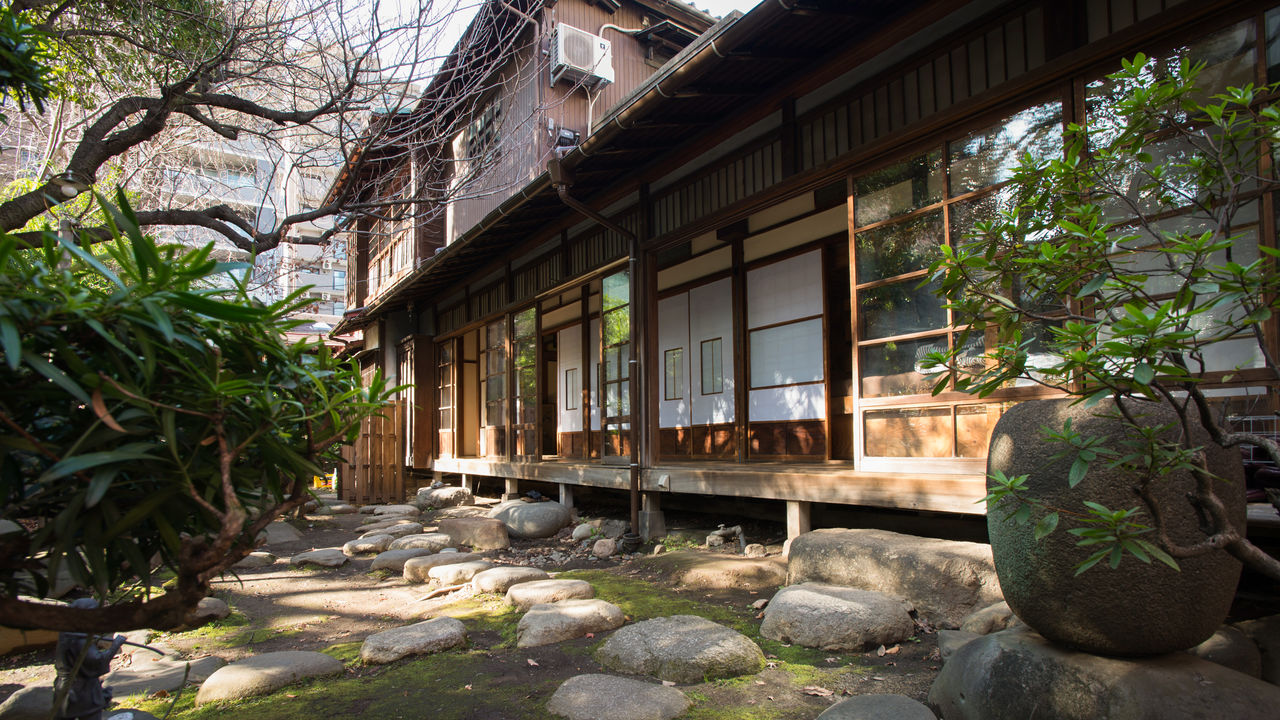
Toco: A Hostel Brimming with the Charm of Yesteryear’s Japan
Guideto Japan
- English
- 日本語
- 简体字
- 繁體字
- Français
- Español
- العربية
- Русский
A World of Elegance Beyond a Tiny Door
Just a two minutes’ walk from Iriya in the city of Taitō, Tokyo, the hostel known as Toco is rather unassuming at a quick glance. With nothing but a small sign marking its presence, it is easy to miss while walking down the street, which certainly would not seem to spell the makings of a guest house booked months in advance.
But, as the old adage goes, appearances can be deceiving.
Taking that first step inside, one notices the living room and lounge-style bar serving tea and alcoholic beverages. The front-facing portion of the structure, renovated from a spectacles shop that was in business some 40 years ago, now showcases a charming, rainbow-colored staircase that provides the central axle for the cozy, charming atmosphere of the inn as a whole.
The entrance area transforms into a bar at night, which is when guests begin to gather together to swap stories. Neighbors and others from the area also frequent the bar, making Toco feel like a place for people of all different backgrounds to come together and meet.
 The main entrance to the hostel. The tiny sign, presenting only the four-letter name of the establishment, gives little hint of the beautiful architecture and garden housed within.
The main entrance to the hostel. The tiny sign, presenting only the four-letter name of the establishment, gives little hint of the beautiful architecture and garden housed within.
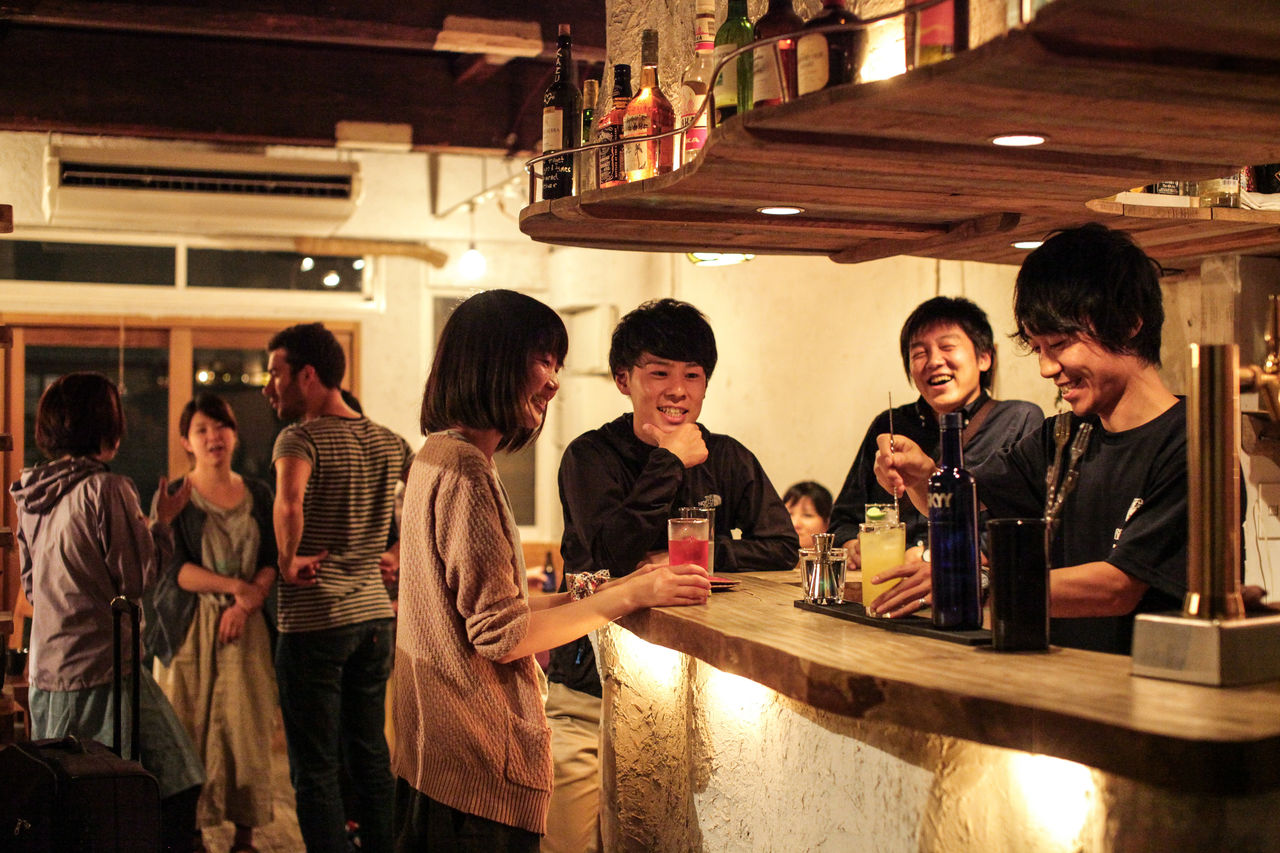 Right inside the door, visitors are greeted with by the lounge, which runs as a bar from seven o’clock in the evening to midnight. (© Backpackers’ Japan)
Right inside the door, visitors are greeted with by the lounge, which runs as a bar from seven o’clock in the evening to midnight. (© Backpackers’ Japan)
Passing through the door just beyond the bar leads you into the old-fashioned central room, with its stately wooden walls, and the well-maintained Japanese garden just beyond that.
It is hard to imagine that behind the modest entrance lies such an elegant, refined view. The main chamber of the building was built nearly a century ago, in the architectural style of old-style Japanese homes from that time.
Toco is said to be one of the main movers-and-shakers behind the boom in popularity of hostels in recent years. Boasting a nearly fully booked schedule, with around 80% of its reservations coming from overseas visitors, Toco is certainly doing something right. On the day we went to visit, we were told by the staff that a German couple had come calling, saying that despite not being able to get reservations, they were still curious to see what kind of experience Toco provides.
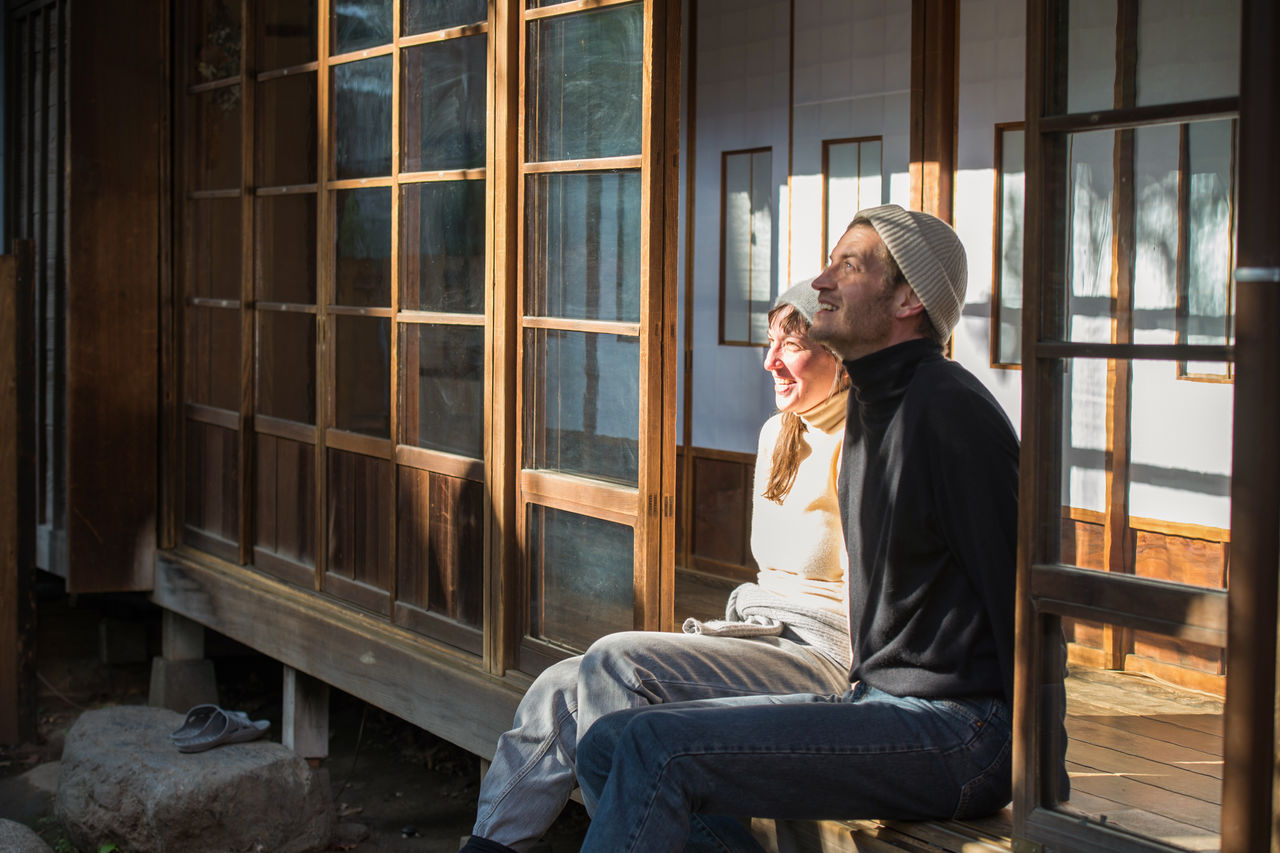 A couple from Germany enjoying Toco’s garden from the veranda. The pair was unable to secure a room, but still came to take in Toco’s atmosphere.
A couple from Germany enjoying Toco’s garden from the veranda. The pair was unable to secure a room, but still came to take in Toco’s atmosphere.
A Stay in a “Good Old” Japanese Home
The first step toward achieving the kind of charm needed to attract travelers is providing an old-style Japanese home and garden that they will “fall in love at first sight with,” according to Backpackers’ Japan CEO Honma Takahiro. Honma explains:
“Back when I was thinking of starting a hostel of my own and looking at real estate, a friend from university introduced me to the building that’s now Toco. It’s close to the station, with easy access to both Narita and Haneda airports, and has simply navigated routes to tourist spots like Ueno, Tsukiji, and Asakusa. But what really pleased me was the fact that it was almost a century old and had a garden. It gets a good breeze, it has good light, and it’s got that smell of the earth to it. I immediately knew this was the place, and practically signed the contract on the spot.”
Homes built during the Taishō period (1912–26) are popular among Japanese as well as overseas visitors. The long verandas, white stucco walls, sliding glass windows, and shōji screens of these properties are the touches of what has become a dying breed as of late, the “good old Japanese home.”
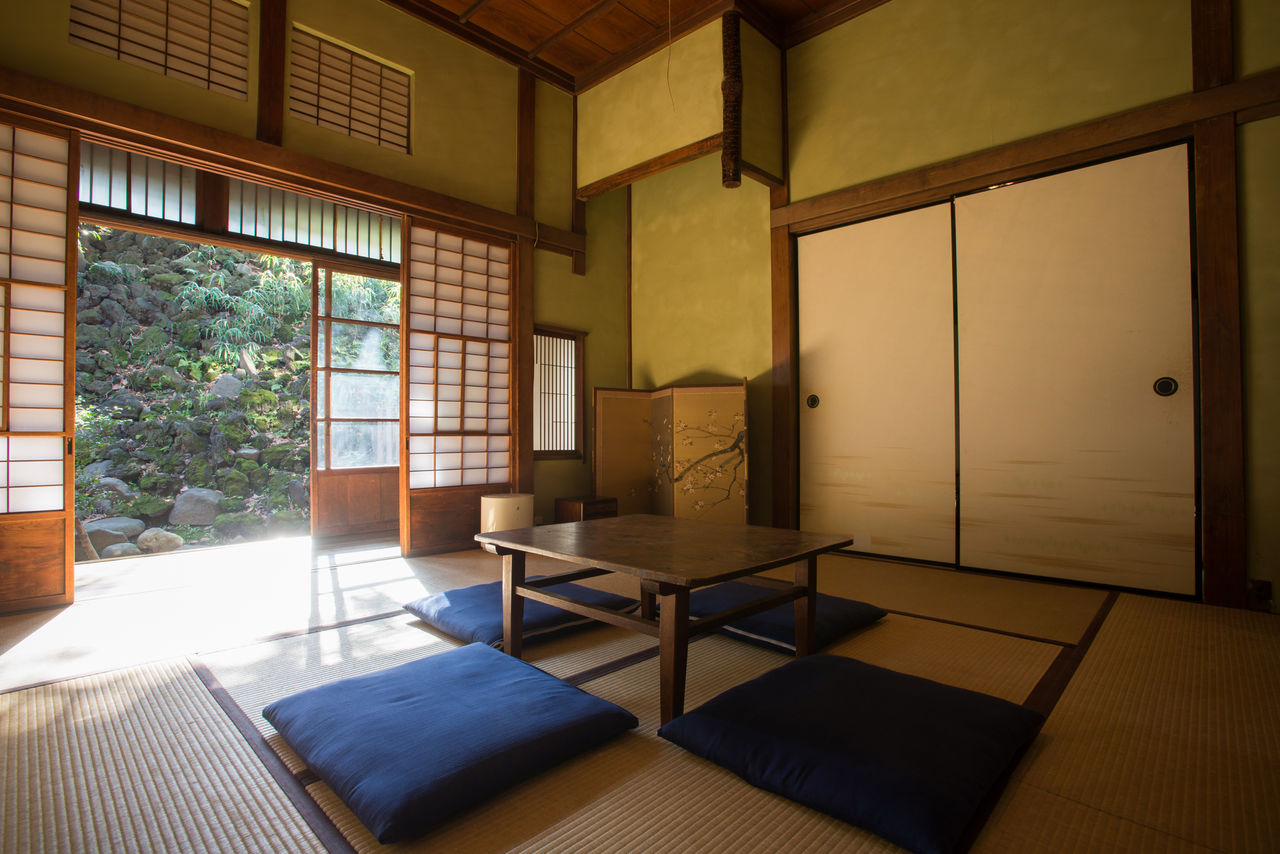 Japanese-style rooms in the inn offer tatami mats and a relaxing view of the garden.
Japanese-style rooms in the inn offer tatami mats and a relaxing view of the garden.
It is not just that the house is old; the house is also well maintained in every detail, from the veranda to the sliding doors. Toco’s staff take their time to polish the wood surfaces to a glossy sheen, and the warm glow of the structure’s wooden frame is set off nicely by the white stucco, portions of which have been redone by the employees.
“When I first came to see the place, the garden and the house had fallen into disrepair. The staff worked together with carpenters to restore it as beautifully as possible,” reminisces Honma.
The Japanese-style garden spreads out before a fujizuka, one of the hills or mounds constructed during the Edo period (1603–1868) to give urbanites easy access to a simulacrum to be climbed like the real Mount Fuji. Japan’s tallest peak’s presence as a divine space meant that even its smaller copies were held to be worth climbing to enhance one’s fortune in business an other fields. The presence of the Fujizuka hill here certainly appears to have been good for business at Toco.
The Fujizuka at Toco is actually the backside of the Shitayasakamoto Fuji, a mound that falls on the grounds of the Onoterusaki Shrine adjacent to the hostel. Gazing out into the garden has a calming, rejuvenating effect that helps to give Toco its charm.
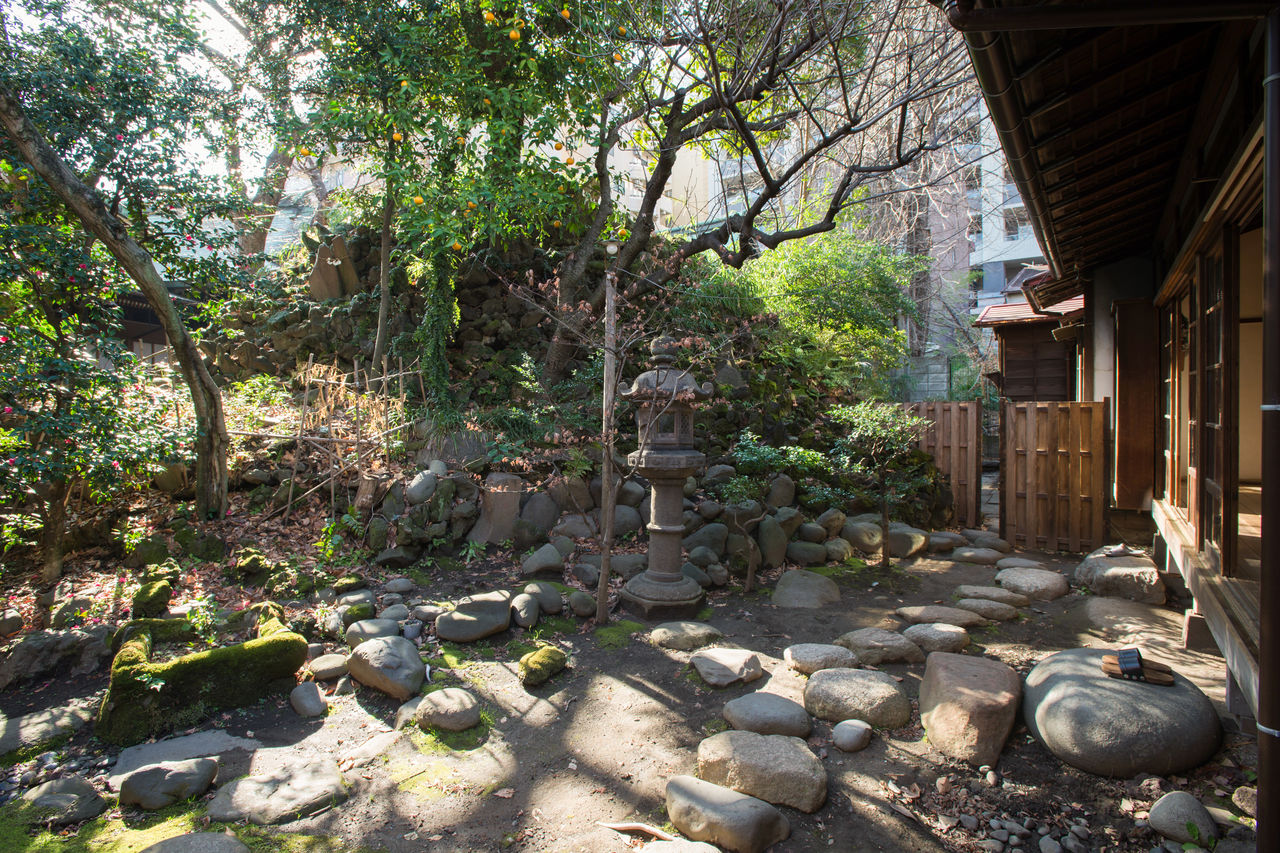 The Fujizuka as seen from Toco’s veranda.
The Fujizuka as seen from Toco’s veranda.
Ingenuity of the Staff Keeps Repeat Business High
Rooms at Toco come in dormitory and Japanese washitsu styles. The dormitory rooms are lined with clean, spacious bunk beds with room under the beds for storing baggage—a welcome feature for travelers. The retro touches and soft lighting of the hostel interior help to put visitors at ease after what can be long journeys to get here.
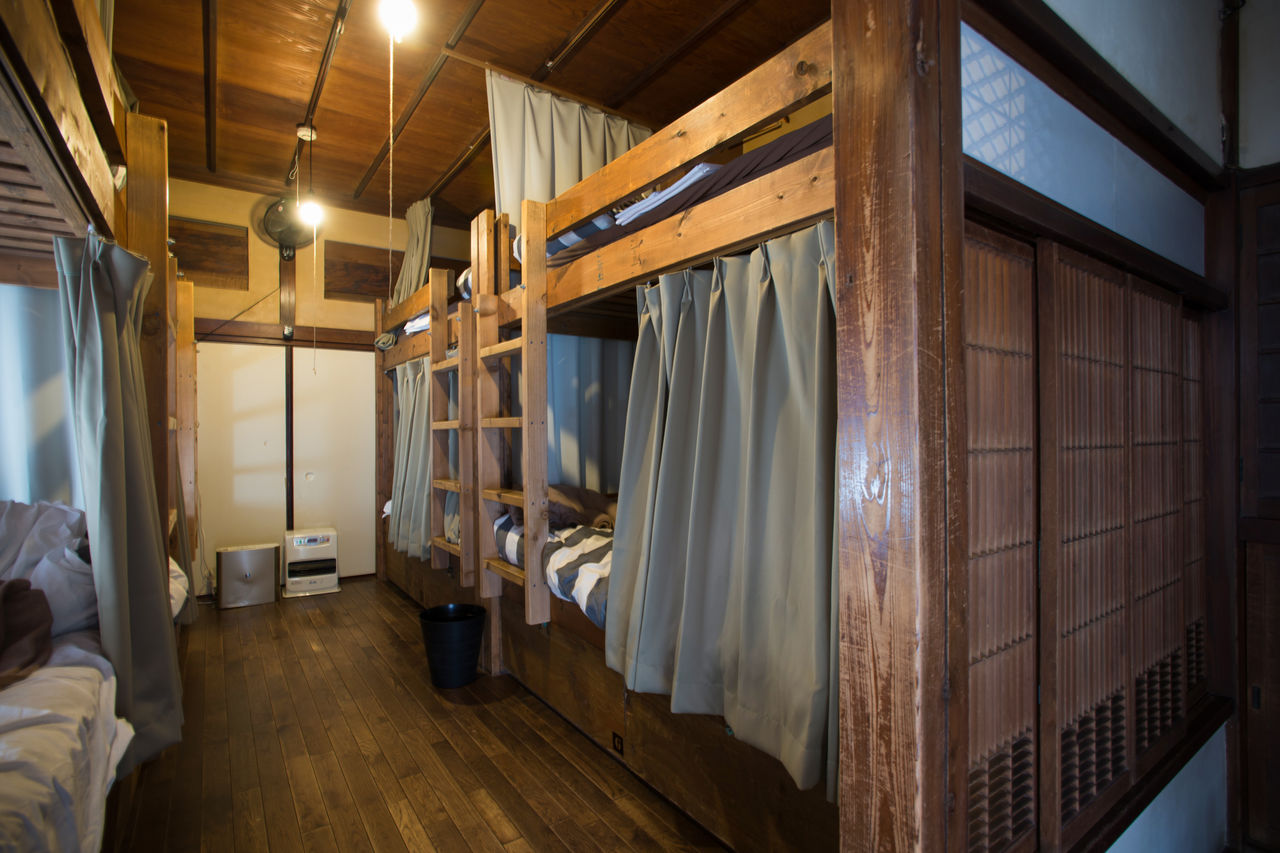 Bunk beds in the dormitories have curtains to add a little privacy. Luggage lockers for storing
Bunk beds in the dormitories have curtains to add a little privacy. Luggage lockers for storing
The large, open kitchen is also worth noting. Equipped with a wide variety of spices, condiments, utensils, and pots and pans, this facility lets longer-term guests prepare their own meals, saving money by avoiding the daily restaurant rounds. The hostel of course has free WiFi access, and also provides conveniently separated spaces for both dining and computer work.
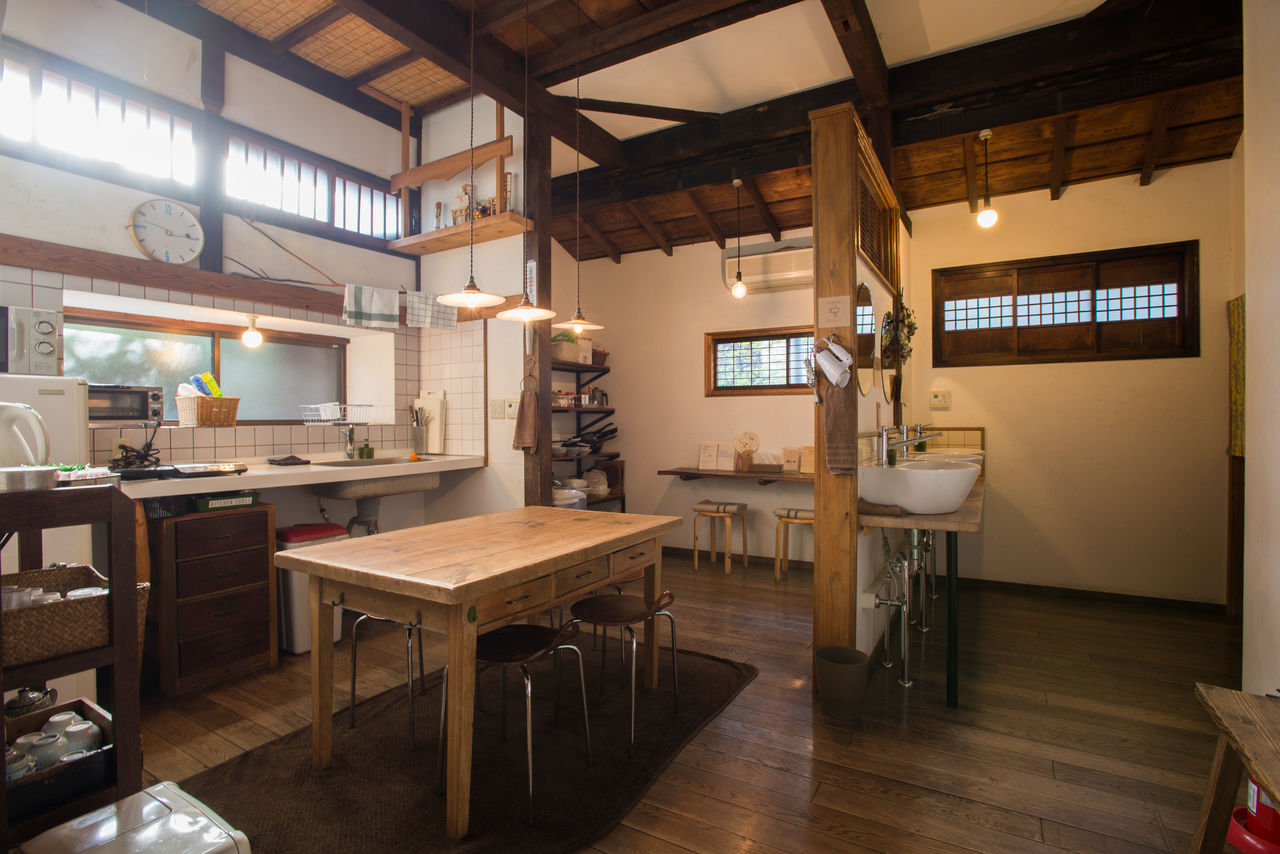 The kitchen offers all sorts of seasonings, spices, dishes, and utensils for guests to use.
The kitchen offers all sorts of seasonings, spices, dishes, and utensils for guests to use.
The interior of the house is decorated carefully, but casually, with flowers and knick-knacks throughout. The Toco staff work to provide the experience of staying in a traditional Japanese-style home while also making travelers’ stays as comfortable as possible. Their care for the hostel shines through in their services.
 The flowers and ornaments placed throughout the hostel reflect the sensibilities of the staff while warmly welcoming visitors.
The flowers and ornaments placed throughout the hostel reflect the sensibilities of the staff while warmly welcoming visitors.
We asked Honma about where the name “Toco” came from.
“The name was thought up by a female staff member who was working here when we first started out. She took part of nedoko, a Japanese word for bed, and tokonatsu, ‘everlasting summer,’ to give us our name. It’s a good name in that it’s easy for visitors who don’t speak Japanese to pronounce as well.”
When Honma opened Toco, he hoped to create a space where people of all nationalities would want to stay. In this he has succeeded. The hostel has seen many repeat guests over the years and is happy to see new ones walk through the unassuming entrance. At this hostel—brimming with charm, taste, and the support of its lovely staff—time seems to pass by a little more slowly.
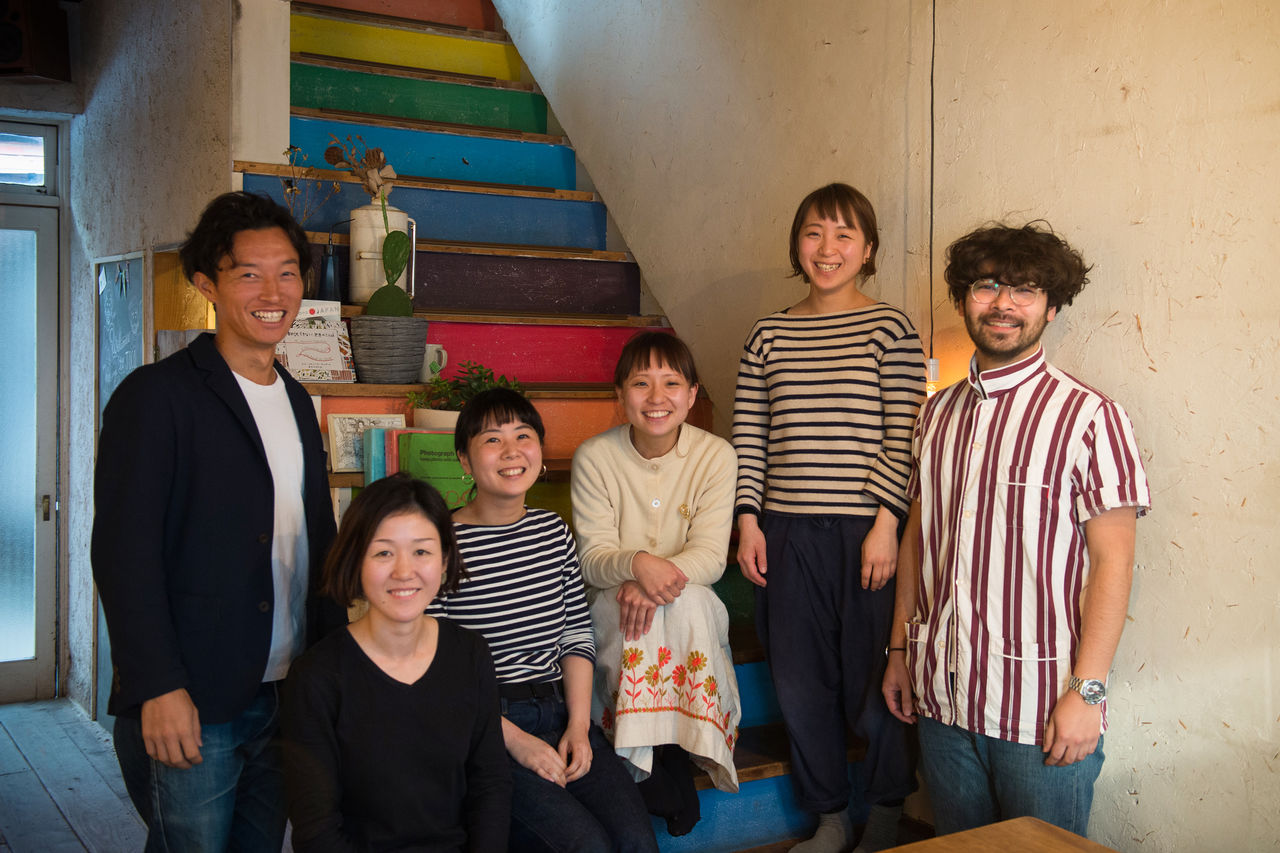 Backpackers’ Japan CEO Honma Takahiro (left) and the toco Staff.
Backpackers’ Japan CEO Honma Takahiro (left) and the toco Staff.
DATA
Guest House toco.
- Address: Shitaya 2-13-21, Taitō, Tokyo
- Tel.: 03-6458-1686
- Access: 8-minute walk from Uguisudani station on the JR Yamanote line; 2-minute walk from Iriya station on the Tokyo Metro Hibiya line
- Price: 1 night for around ¥3,000
- Official website: https://backpackersjapan.co.jp/toco/english.html
(Originally written in Japanese by Mitamura Fukiko. Photographs by Kodera Kei.)